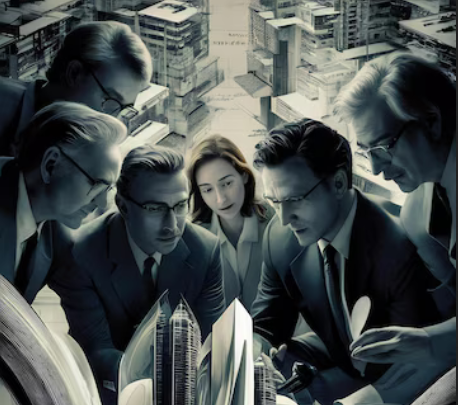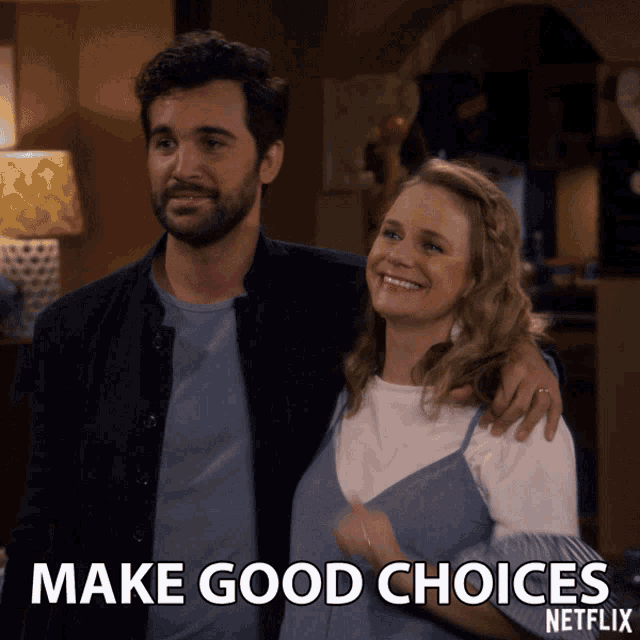9 Proven Ways to Make a Difficult Decision
-
Galina Ostrachinyna
Copywriter Elbuz
The decision came suddenly, like an inspiration, but how to understand that it is correct? Should you trust your intuition, or is it better to weigh the pros and cons? In a world where every mistake can be costly, the ability to make difficult decisions becomes an art. When faced with a big decision, break it down into its components. Each of the methods described later in this article helps you make informed decisions, minimizing the risk of errors. In a world where success depends on the accuracy and timeliness of decisions, these methods will become your reliable assistants.

Glossary
- 🎯 Problem: A problem or situation that requires solution or study.
- ⏰ Decision Time: The period allocated for analyzing and making a decision on a problem.
- 🏞 "Sitting on the River Bank": A waiting method where it is important to wait and watch before making a decision .
- ✨ "Do it and regret it": A principle that suggests actively taking action even if there is a risk of regret.
- 🕰 "Time to First Decision": The concept of choosing a timely, but not necessarily perfect, decision.
- 📜 Law: Official rules or principles to refer to when decisions are unclear.
- 👥 Brainstorming: The process of discussing an issue with other people to get a different opinion.
- 🌅 "The morning is wiser than the evening": The idea of postponing a decision until the morning, when the mind is fresh.
- ✍️ Written Analysis: Record thoughts and solutions for better understanding and analysis.
- 😡 Emotional Control: Managing your emotions, especially in stressful situations, to make an objective decision.
- 🧠 Creative thinking: Stimulating a non-standard and original approach to solving a problem.
Proper planning of time for making a decision
When making difficult decisions, I always start by estimating the time required to develop the final solution. I can tell you from personal experience that this is one of the most important steps in the decision-making process. For example, when I decided to leave the office and become an entrepreneur, I had plenty of time to think about it. It was important not to rush, but to prepare thoroughly: analyze the market, study competitors and find all the pitfalls of a new business.

Personal time planning
🎯 Leaving the office and starting your own business. I believe that the key to success is not only an idea, but also careful timing. When I decided to leave the office and become an entrepreneur, I gradually, step by step, planned my departure, taking into account all the possible risks. Ultimately, this helped me avoid many mistakes and make the transition into business smoother and more successful.
Assessing the timing and consequences
When I was faced with a fine from the inspection authorities, I realized how important it is to make a decision on time. In such situations, deadlines cannot be missed. For example, I had to urgently pay a fine or challenge it in court - I had no more than 10 days to file a complaint. If I missed the deadline, I would lose the opportunity to avoid paying the fine, which would be financially unprofitable. In such situations, you cannot delay.
Table: useful and unhelpful actions
| Useful actions | Unhelpful actions |
|---|---|
| Strategic Planning | Rush |
| Competitor and market analysis | Neglect of deadlines |
| Timely appeal to the court in case of disputes | Missing the deadline for filing a complaint |
Best Practices
I recommend always starting with an estimate of your decision time. Here are some tips I use:
- 🕰 Determine the urgency of the situation. For example, if you have a fine from inspection authorities, the timing is critical.
- 📅 Make an action plan. As I did when leaving the office, every step must be carefully thought out and taken into account.
- 📈 Monitor the situation. Analyze the market and competitors, like I did before going into business.
- 📜 Meet deadlines. You cannot miss deadlines in legal disputes, as I have learned from my own experience.
- 🗣 Consult the experts. Gain experience and heed advice to minimize risks.

Total
I am convinced that proper time management when making difficult decisions plays a key role in success. In my personal experience, careful preparation and strategic planning can ensure success in any endeavor. I suggest you consider my approach and apply it in your actions, I am sure it will benefit you.
More about my experience 👉 leave the office and become an entrepreneur.
Method No. 1 - The principle of “if you sit on the river bank for a long time”
In my practice, I often used the principle “if you sit on the bank of a river for a long time, you can see the corpse of an enemy floating past.” Confucius said: patience is the key to solving many problems, and his words are confirmed time after time. 🚀
How I applied this approach
In one of my significant projects, I was faced with a dilemma: whether to move on to my own business or remain in your current position. I worked on an online store, thinking through every aspect of the transition to entrepreneurship. But sometimes we should all just wait for better opportunities. At one point, a friend of mine offered to rent an office on extremely favorable terms, and I grabbed this opportunity.
👉 The main thing here is the ability to wait, but not sit idle. Think through, analyze and prepare for different situations.
The second case confirms
An example from my life, when I was laid off at work, showed how important it is to be prepared for changes . While my colleagues rushed to look for a new job, I was calmly completing the project of my online store and was in full combat readiness. The downsizing turned out to be in my favor, and I was able to smoothly transition to business with minimal losses.

That's why I believe in the principle of patient waiting:
🟢 Patience often leads to better decisions
🟢 The ability to wait allows you to adapt to new circumstances
🟢 Being prepared for different scenarios reduces stress and helps you make informed decisions
🟠 Don't wait forever - proactive planning and execution are important
Summary
In my practice, I learned to follow this principle, and it always bore fruit. My advice to you: don't be afraid to wait and analyze, but don't forget to act when the opportunity presents itself. This is especially important in a competitive environment. By the way, I recommend paying attention to the article on how to bypass competitors, which may be useful in your practice.
Tip: Waiting patiently can help you find the best deal. But it is important to combine this with active preparation and implementation of ideas.

| Things to do | Things not to do |
|---|---|
| Be prepared for different scenarios | Do nothing and wait endlessly |
| Analyze emerging chances | Neglect preparation |
| Explore new possibilities | Question every step |
Steps to success: prepare patiently and analyze, and opportunities will find you!
Method #2 - Action as the key to success: An experienced approach to complex decisions
I have always believed that when making difficult decisions, the difference between success and failure often lies in whether we decide to take action or remain passive. One incident from my life clearly demonstrated this.

One day I was faced with a difficult decision - should I participate in a risky project that could bring significant benefits, but also had a high chance of failure. Let me remind you of the famous scene from the movie One Flew Over the Cuckoo's Nest, where Jack Nicholson's character tried to lift a huge apparatus in the shower. He couldn't, but said: "Well, at least I tried".
So, I decided to take on this project myself. My desire to avoid inaction was stronger than my fear of failure. While immersing myself in the project, I attracted a team of professionals, carefully analyzed every step and used my intuition. As a result, despite the difficulties, the project was successful and brought significant benefits.
🛠️ Why this is important:
- 🎯 Action gives a chance for success. Even if the result is not achieved, you have gained valuable experience.
- 💪 It is psychologically easier to cope with failure if you have done your best.
- 🧠 Not taking action leaves a feeling of missed opportunity and regret.

I can say with confidence that avoidance acting out of fear of possible failure leads to even greater disappointment. I am convinced that in such situations it is better to act and see results than to regret inaction.
An example from my practice: working with a large client, when I had to choose between two promotion strategies. One of them was less risky, but also less profitable. The other is high risk but with potentially high rewards. I took responsibility for the decision and chose the riskier option. As a result, we not only achieved our goals, but also significantly exceeded expectations.
"The best strategy is not to avoid risk, but to manage it." — John F. Kennedy.
📋 Practical tips:
- 🔍 Analyze all possible courses of action. Consider the pros and cons of each decision.
- 🎲 Be prepared for risks. Learn to manage risks and not be afraid of them.
- 👩🔬 Seek support from colleagues and experts. Meetings and consultations with professionals will help you avoid critical mistakes.
Review table:
| Action | No action |
|---|---|
| Potential for success | Missed opportunities |
| Experience and training | Lack of experience and skills |
| Respect and recognition | Regret and doubt |
| Active Risk Management | Increase in Fear and Passivity |
It's better to do and regret than not to do and regret. This is the approach that guides me in life and which I successfully apply in practice, and which I recommend that you pay attention to.
Method 3 - better once on time than twice right
There was a case in my practice that clearly illustrates the importance of timely decision making. Two partners decided to open an online store for bicycle parts. They created a website using the ELBUZ constructor, found suppliers and rented an office. It would seem, why not success? But one important thing remained - the development of a corporate identity and logo for the company.

Instead of doing everything quickly and easily in the site settings, as I would recommended, they decided to hire a designer and order a layout from him. It took a month to find a suitable candidate, since the budget was limited, and working for pennies did not inspire anyone. As a result, they found a freelancer they knew who agreed to help practically free of charge.
However, the designer did not want to start work - he was busy with other projects, and several more weeks passed in anticipation. The online store is still not launched, office rent and other expenses are piling up. When the designer finally provided the result, the guys didn’t like the work and required modifications, which again took a long time.
And in the end, the guys lost more time and money than they could have if they had initially chosen a simpler and faster solution. Therefore, I highly recommend considering the following methods in situations like these:
- 🎯 Prioritize: Sometimes it's better to do something quickly and efficiently, and then, when you have more time and resources, come back to refine it.
- 💡 Use available tools: Modern website builders offer many ready-made solutions that can save you time and money.
- 🤝 Engage professionals on terms that suit everyone: If funds are tight, it may be better to do something first on one's own.

I'd like you to avoid them errors. Rely on simple and efficient methods so as not to stop in your development and not slow down the launch of important projects.
I see people outsourcing their efforts to freelancers all the time, without always considering the time frame and financial implications. In such cases, I would better recommend doing everything yourself first, and then modifying it if necessary.
Best Practices:
| Action | Helpful | Not helpful |
|---|---|---|
| Quick decision | ⬆️ Saves time and resources | ❌ Possible compromise on quality |
| Improvisation | ✔️ You can start a project and continue to develop it | ❌ It is possible to miss important details at the beginning |
| Attracting freelancers | ✅ Useful for specialized work | ❗️ May delay the process and increase costs |
Think about the current situation in your project and decide what would be most effective right now. I am confident that timely decisions will help you avoid unnecessary delays and financial losses.
Method #4 - Follow the law in making decisions
In my practice, I have often encountered moral and legal dilemmas, especially when running a business. I remember how once, having hired new employees, I was faced with a choice: start work immediately, saving time on drawing up employment contracts, or do everything according to the law, despite the time costs. The solution seemed obvious, but the temptation to act quickly and save money was great.

It is important to remember that following the law is not just a formality. I once observed a situation where an entrepreneur decided to avoid taxes and began paying wages in envelopes. At first glance, this seemed like a smart economic move. However, this later led to extensive audits and large fines, which ultimately damaged his business and reputation.
🤔 When there is a choice between convenience and legality, I will always choose the law. Let's look at a few reasons why this is important:
Points of Interest
- 🌟 Reliability and peace of mind: I can confidently say that working within the law eliminates unnecessary stress. The legislation protects your interests as an employer and the safety of your employees.
- 💸 Long-term economic benefits: Short-term savings can lead to huge financial losses due to fines and litigation . I am convinced that long-term compliance with the law reduces risks.
- 📈 Company Reputation: The company's reputation is built on its honesty and transparency. When I follow the law, I can convey to my clients and partners the confidence that our cooperation will be fair.
Practical example
You are the owner of an online store and have decided to rent an office for your employees. Your team is ready to start work, but the necessary employment contracts have not yet been concluded. You are wondering whether to wait or start selling right away, while completing paperwork. I would suggest the following:
- Complete all legal formalities before starting operations. Not only is it legal, but it also protects you from potential problems in the future.
- Make sure your employees are officially registered and their employment contracts are properly executed. This will create an atmosphere of trust and transparency in the team.

Me it seems that the correct solution in this case is to always act according to the law. It's cheaper and safer in the long run.
Useful table
| Action | Good for business | Not good for business |
|---|---|---|
| Employee registration | ✅ Protects against fines | ❌ Time consumption |
| Official salary payment | ✅ Strengthens reputation | ❌ Start-up costs |
| Timely registration | ✅ Expands the capabilities of | ❌ Requires administrative resources |

Summary
I advise you to always choose the path of legality in your decisions. This may require more effort initially, but provides peace of mind and sustainable growth for your business. Not only is this the right thing to do ethically, it's also a strategic decision to protect your business and employees.
💡 "Remember, every time you make a decision within the law, you are laying the foundation for long-term success and trust from clients and partners."
Tip #5 - Consult with more experienced colleagues
How often have I encountered situations where it seemed impossible to make a decision on my own. However, one of the most effective means that I have used in practice is consultation with more experienced colleagues. This method has saved me more than once in the most difficult moments of my career.
I remember once we were launching a new project in our company. This was a large-scale project requiring a huge number of decisions. One of the most important aspects concerned the strategic choice of technology. Despite extensive research, I found it difficult to make a final choice. Then I decided to turn to one of my colleagues, a successful and very experienced specialist in the field of technological innovation. She was able to share her experience, her own mistakes and achievements, which helped me make an informed choice.

🤝
I recommend seeking advice from those who have already gone through similar situations:
- Such consultations help to look at the problem from the outside without diving too deeply.
- This is available to everyone, regardless of skill level or industry.
- Often, colleagues can offer non-obvious solutions that seem simple, but they are precisely what is missing.
Another example from my practice is related to the selection of a supplier for an online store of sporting goods. The decision I had to make seemed extremely difficult at first glance. So I turned to one of my former mentors who had once dealt with similar problems. He not only suggested a number of proven suppliers, but also gave valuable advice on the terms of the contract, which significantly simplified the selection process. 
📈
I noticed that advice from more experienced colleagues almost always contain many useful details:
- They know the pitfalls . People with experience understand what mistakes can be made and how to avoid them.
- They provide valuable advice. Sometimes the solution lies on the surface, you just need to see it from a different perspective.
- They have up-to-date information. Since colleagues are in the same professional environment, they can offer the latest data and trends.
In such situations, I can say with confidence that it was consultations with more experienced colleagues that allowed me not only to avoid mistakes, but also to take strategically important and informed decisions.
"You can't see a face face to face, you can see a big one at a distance," - Ernest Hemingway. This quote accurately reflects the principle of consultation. Colleagues on the outside can see what is hidden behind a mountain of small details for those immersed in the problem.
Practical tips and best practices:
| Useful practices | Not worth doing |
|---|---|
| Contact experts in your industry | Don't consult everyone at once |
| Listen to advice , but make your own decision | Don't get hung up on too many different opinions |
| Analyze the experience provided | Don't blindly follow every advice |
I strongly recommend that you pay attention to the opinions of your experienced colleagues. This is an extremely valuable resource that is often overlooked. By following these tips, you can make smarter and more confident decisions.
Tip #6 - Sleep is the best advisor
When we are faced with difficult decisions, sometimes the best thing we can do is simply put them off until the morning. I discovered that “the morning is wiser than the evening” is not just a saying, but a truly effective method. Let me share my experience and tell you how this method has helped me in my professional life.

📈 Planning for Change
One day, while working on a large project to optimize business processes, my team faced a serious problem. The decision had to be made quickly, but we could not find the best option. Instead of late-night meetings, I suggested postponing the decision until the morning. The next morning everything was much clearer and we were able to find a solution that suited everyone.
Remind yourself that if the situation allows, it is better not to rush into an important decision. Give yourself time to “sleep with the thought.”
💡 Emotional distance
Another case concerns the decision of whether to keep an employee, who made a serious mistake. After the incident, I was prepared for strict measures, but, having gathered my thoughts in the morning and discussed everything with the team, I was able to find a path to a solution that allowed not only to correct the mistake, but also to unite our team.
- 🌟 Promotes sober analysis: A break gives us the opportunity to relieve emotional tension and look at the situation is more objective.
- ✋ Reduces the risk of errors: At night we may overestimate the significance of the problem, and in the morning everything may look different.
🔄 Changing circumstances
Often the circumstances themselves change overnight, and the problem solves itself . I remember a case when I was planning to fire an employee for a serious mistake. However, the next morning he himself proposed a solution that not only corrected the situation, but also benefited the company.
😴 How to correctly apply the method
- 🕐 Don’t delay too long: If the problem is urgent, set a time limit for postponing it.
- 📅 Use planning: Write down your thoughts and ideas before bed so you can come back to them with a fresh perspective in the morning.
- 🛏 Sleep is not for everyone: If you can't sleep while thinking, try other methods.

📥 Method overview table
| Useful practices | Not recommended |
|---|---|
| Postpone your decision until the morning | Making decisions in an emotional state |
| Write down your thoughts and ideas | Reschedule the problem |
| Discuss the situation with your colleagues in the morning | Leave the decision without discussion |
| Assess changes in circumstances | Hoping for an instant solution |
I am convinced that this method has been tested by time and experience.
Method #7 - splash
onto paper {|2|}} Free your brain from confusion and pour it all out onto paper. In a difficult situation, I often use this method, and it has shown its effectiveness more than once. Taking a blank sheet of paper, I start by dividing it into two halves. In one half I write down all the advantages of the solution, and in the other - its disadvantages.
How I do it
Divide the sheet into two columns. In the first column I write down all the positive aspects of the decision, and in the second - the negative ones. If you think this is a small thing, try it yourself! This, oddly enough, helps to really free up your head.
Evaluating the significance of arguments. It is important to understand here that not all arguments have equal weight. Sometimes one single powerful argument can outweigh a whole list of others. Once I had a case when the issue of “rent for an office” was being resolved, and my calmly sleeping mind crossed out all material benefits.
Intuition and personal priorities. I often had to face a choice between personal interests and business decisions. Believe it or not, this simple exercise helps you honestly consider your true desires and needs.
Practical application
In practice, we, for example , were considering a large project. After analyzing all the advantages and disadvantages, it became obvious that the financial costs outweighed all the advantages. But after consulting with my colleagues, I realized that the opportunity to develop new technology is more important. As a result, the project was successful and gave the company a significant advantage in the market.
I am convinced that paper helps you visualize what is really important. I highly recommend trying this method, especially if you are faced with a difficult decision.

| Useful tips | What not to do |
|---|---|
| ✅ Spill it all on paper | ❌ Blindly follow the list |
| ✅ Evaluate the significance of the arguments | ❌ Ignore your intuition |
| ✅ Consider personal priorities | ❌ Ignore large details |
Result: To To make more informed and confident decisions, try visualizing your options. This method will help you structure your thoughts and see the situation in its entirety.
Tip #8 - Don't make decisions based on emotions
One of the most important lessons I've learned in my career is to avoid making decisions based on emotions. The lion's share of decisions made in a fit of anger or under the influence of joy turn out to be wrong.

Example & description
Once on a wave of success, I earned a lot of money and decided to buy a car, even took out a loan. At that moment it seemed that this was a great decision, because joyful emotions literally overwhelmed me. However, after some time, I realized that it would be more appropriate to invest this money in business development. If I had waited a little, I could have taken advantage of a profitable project and, perhaps, earned money for three cars instead of one in a year. But emotions took over, and this became a valuable lesson for me.
🎯 Tip: If you feel overwhelmed by emotions, stop and postpone the decision to the next day. This will help you look at the situation soberly.
Errors in calculations
An equally striking example was the case with my accountant. One day she made a mistake in the calculations, which led to additional tax charges. In the first wave of anger, I immediately fired her without fully understanding it.
.png)
After a while, I realized that the man was a competent specialist, and the mistake arose from -for incorrect data from the supplier. Finding such a specialist turned out to be difficult, and I regretted my decision.
✨ Recommendation: Before taking drastic measures, give yourself time to calm down and understand the details of the situation. Analyzing the nuances and circumstances will help you make an informed decision.
The Importance of Self-Control
I always emphasize that in business, emotions should be kept aside. It is self-control that helps maintain professionalism and reputation. In any case, it is important to remember that:
😌 Gradually calm down and use your mind.
👀 Sleep with a thought - give yourself time to think.
*📊 Analyze the current situation.
Lessons and Tips
When you're faced with an important choice again, remember my recommendations. Avoid emotional decisions and analyze alternatives. As my good consultant said: “The best decision is an informed decision.”
"No one can prepare for battle better than you." - Napoleon Bonaparte.
Table of useful and harmful practices
| Useful practices | Harmful practices |
|---|---|
| Consult with colleagues and experts | Making decisions based on emotions and first impressions |
| Assess long-term consequences | Neglecting risk analysis |
| Use planning and strategic approaches | Incorrect allocation of resources |
| Consider past experience when making decisions solutions | Ignoring signs and factors |
I believe that following these practices will help you make smarter, more informed decisions, minimizing risks and maximizing opportunities.
Tip #9 - Expand the list of possible solutions
One strategy that has helped me make difficult decisions is to expand my options as much as possible. Often a problem has many more solutions than we can imagine, and realizing this opens up new horizons.

I have often encountered situations where it was difficult to find a way out of a difficult situation. At such times, I noticed that my horizons were too limited, and I focused only on a couple of obvious options. To overcome this, I began to connect independent sources of information. For example, 📚 I read books on this topic and studied various approaches. As a passionate advocate of exploring new ideas, I've spent many hours on forums and blogs asking questions and learning from other people's experiences.
💬 One of the resources that inspired me was the advice to ask children for their opinions. For example, I asked my friend’s five-year-old son questions about how he sees a solution to a particular problem. His unclouded childish gaze allowed me to see what I, an adult, could not notice. This may sound like a joke, but I have found that children see the world more simply and can come up with unexpected solutions that adults might miss.
Here are some specific examples of how this can be implemented:
🔍 Search the Internet for alternative opinions and discussions. For example, when I was thinking about how to increase sales in my online store, I found several useful publications on hiring employees.
📖 Read thematic books. Living literature often contains practical examples and approaches that can be applied in practice. I read books about cognitive science and creative thinking, which gave me new tools for analyzing problems.
👶 Ask children for advice. For example, I asked a five-year-old to point out all the flaws in my plan to increase my blog audience. He immediately noticed where I made mistakes and suggested how to eliminate them.

🔹I am convinced that each of us can discover new solutions simply by broadening their horizons and looking at a problem from different perspectives. Below I have prepared a small table with examples of useful strategies and what to avoid:
| Helpful Strategies | Things to Avoid |
|---|---|
| Using books and forums📚 | Limiting yourself to one source |
| Appeal to children and unconventional opinions👶 | Ignoring alternative points of view |
| Active search for solutions on the Internet 🔍 | Getting stuck on the first ideas that came to mind |
By following these tips, I am sure that you will be able to find more effective and innovative ways to solve your problems. Explore, expand your horizons and don't be afraid to experiment!

Experience Moët & Chandon
Description of the company and its goals
Moët & Chandon is one of the world's most famous champagne companies, founded in 1743 by Claude Moët. Their products symbolize sophistication, luxury and elegance, which has made the brand an important element of various celebrations and events. The company strives not only to maintain high quality standards for its champagne, but also to constantly seek new marketing approaches to strengthen its presence in the market.

Main goals and objectives
The primary objectives of "Moët & Chandon" when solving a complex management issue are:
- Increasing sales and expanding the customer base.
- Maintaining high levels of customer satisfaction.
- Development of successful advertising campaigns.
Formulation of the main problem
The company was faced with the need to choose a comprehensive marketing strategy to enter new markets in conditions of high competition and economic instability. This choice was critical to keeping the brand strong and increasing market share.
Characteristics and interests of the target audience
The target audience of Moët & Chandon includes:
- 🎉 Lovers of premium alcohol.
- 💼 Successful businessmen and wealthy people.
- 🎓 Young professionals striving for high standards of living.
- 🥂 Organizers of events and celebrations.
They are interested in unique products, exclusive offers and participation in significant social events. 
Key points of interest to potential clients
- Exquisite quality product.
- Historical significance of the brand.
- Presence of in significant ceremonial events.
- Exclusive offers and access to private events.
Facts, figures and specific results of the project
📊 Impressive results were achieved during the project :
| Indicator | Value |
|---|---|
| Increase in sales | 25% for the first year of strategy implementation |
| New markets | 3 new markets (Asia, Latin America) |
| Satisfaction level clients | Increased by 15% |
"Sales growth and new market penetration are key indicators of the success of a proven solution." - Bernard Arnault, CEO of Moët & Chandon.
Strategic methods applied
Advance planning: A clear deadline was set for selecting and implementing a new strategy , which made it possible to structure the decision-making process.
Guidance: As the famous saying goes, “If you sit on the river bank for a long time, you can see the corpse of an enemy floating by.” The company carefully researched the market and the behavior of competitors before taking action.
Risky tactics: Following the principle of "doing better" and regret rather than not do and regret" allowed the company to introduce innovative approaches to marketing.
Timely actions: "Better once on time than 2 times is correct." Early entry into new markets provided a significant competitive advantage.
Consultations with experts: "One head is good , and two are better." The decision was supported by analysts and consultants.
Postponement of decision: "The morning is wiser than the evening ". Issues requiring emotional involvement were discussed in the morning sessions.
Documenting decisions: "What is written with a pen, You can’t cut it out with an ax.” The introduction of regulations and plans made it possible to avoid misunderstandings.
Emotional Control: "Don't make decisions in anger." Strict control of the emotional state of managers helped to avoid impulsive decisions.
Creative Approach: "Think outside the box." Using innovative marketing campaigns and non-standard methods of product promotion.
This is a case study of how Moët & Chandon used nine strategic techniques to make a complex decision and achieved significant successes, expanding its influence in the market.

Often asked questions on the topic: 9 proven ways to make a difficult decision
How to determine the time to solve a problem?
What does it mean to “sit by the river” in the context of decision making?
Why is it better to do and regret than not to do and regret?
What does it mean “better 1 time on time than 2 times right”?
How can the law help you make a decision?
Why is it important to consult with others?
How can night affect your decision making?
What does it mean “what is written with a pen cannot be cut down with an axe”?
Why can't you make decisions when you're angry?
How to think outside the box when making decisions?
Thank you that you read and became more experienced! 🎉
Making tough decisions doesn't seem so scary anymore, right? Now you have convenient tools that you can use every day. You will become the driving force of effective solutions in your environment. Success loves those who are brave and determined. Try each method, share your success, and together we will make the world a better place! Galina Ostranyna, independent expert at Elbuz. 💡🚀 Leave a comment, I appreciate your opinion!

- Glossary
- Proper planning of time for making a decision
- Method No. 1 - The principle of “if you sit on the river bank for a long time”
- Method #2 - Action as the key to success: An experienced approach to complex decisions
- Method 3 - better once on time than twice right
- Method #4 - Follow the law in making decisions
- Tip #5 - Consult with more experienced colleagues
- Tip #6 - Sleep is the best advisor
- Method #7 - splash
- Tip #8 - Don't make decisions based on emotions
- Tip #9 - Expand the list of possible solutions
- Experience Moët & Chandon
- Often asked questions on the topic: 9 proven ways to make a difficult decision
- Thank you that you read and became more experienced!
Article Target
The purpose of the article is to provide readers with specific methods and strategies that will help them make informed and confident decisions.
Target audience
people faced with difficult decisions at work or in their personal lives, students, specialists in any field
Hashtags
Save a link to this article
Galina Ostrachinyna
Copywriter ElbuzThe secrets of online store automation are revealed here, like the pages of a magic book of a successful business. Welcome to my world, where every idea is the key to online effectiveness!
Discussion of the topic – 9 Proven Ways to Make a Difficult Decision
Provide insight into nine proven techniques to help people make difficult decisions: practical examples and application tips.
Latest comments
15 comments
Write a comment
Your email address will not be published. Required fields are checked *
























William Smith
I recently came across an article about decision making. Do you think it’s worth trusting your intuition or is it better to rely on facts? 🤔
Hans Müller
I agree with William. Intuition can play a cruel joke. It is always better to analyze the data.
Marie Dubois
And once my intuition saved me from a serious mistake at work! Sometimes it's better to follow your inner voice.
Juan Martinez
I often use the plus and minus method. It quickly helps you weigh everything and make a decision.
Francesca Rossi
The '10/10/10' method is also great. How will this affect me in 10 minutes, 10 months, 10 years? Helps a lot!
Piotr Kowalski
Yes, all these methods are nonsense. Everyone does what they want anyway. 😂
Olena Petrenko
@Piotr Kowalski maybe, but it wouldn't hurt to plan and analyze. I always have a better chance of success this way.
Hans Müller
Has anyone tried the decision tree technique? Highly recommend!
William Smith
By the way, yes, the 'decision tree' is a cool thing. Helped to avoid major losses on the previous project.
Галина Остраницына
Great ideas discussed! What about the 'six thinking hats' method? Who tried it?
Marie Dubois
@Galina Ostranyna, I tried this method, it’s interesting, but it takes time and practice. But the result later justifies it!
Juan Martinez
The 'six hats' method is great for teamwork. We discuss all the different aspects and find a solution.
Francesca Rossi
Everything is clear with the methods. How can you learn to trust your decision after making it?
Olena Petrenko
@Francesca Rossi, good question! Maybe you just need to practice more and learn from your mistakes?
Галина Остраницына
Practicing and analyzing your decisions is really important. It's also helpful to keep a resolution journal to track your progress and improve your approach.